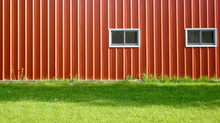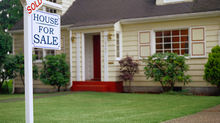How Can I Improve the Energy Efficiency of My Home? (Part 1)
Your house is more than four walls and a roof. It's a complex system with numerous components working together to meet the demands you place on it. If your home is not working efficiently to keep up with those demands you may experience things like inconsistent temperatures throughout the house, drafts, or even excess moisture indoors. No good!
Improving efficiency usually comes down to targeting your home's envelope: walls, the attic, windows and doors. Once those foundations are good to go, then you can move to updating your heating and cooling systems or replacing lighting and appliances.
It's important not to get ahead of yourself. After all, what's the point of installing a better furnace when all that heat is just going to escape through the attic?
What to Address (and In What Order)
Wall Insulation and Attic Insulation
First things first, make sure your walls and your attic are well insulated. Effective insulation slows the rate that heat flows out of the house in winter (or into the house in summer), so less energy is required to heat or cool the house month to month. This is huge! If your house has no attic or wall insulation, blown-in insulation can massively improve your comfort level throughout the year, no matter the temperatures outside.
Note: Your contractor's expertise installing insulation is much more important than the material you choose. Fiberglass, cellulose or spray foam, carefully applied insulation material will reduce the heat conduction of your wall system. The key: properly installed. A top-notch contractor (like us) will use an infrared camera during and after installation to look for and fill voids.

Keep Reading: 5 Selfish Reasons to Insulate Your Attic
Upgrade or Replace Old Windows
If your windows are old and "leaky," it may be time to replace them with more energy-efficient models or to boost their efficiency with short-term solutions like weatherstripping. Replacing windows can be expensive (in fact, it's often one of the most expensive home updates you can make), but the benefits are significant. Your first priority should be replacing single-glazed windows that are original to the house.
Replace Your Furnace
If your furnace was built before 1990 and has a standing pilot, it probably wastes a good 40% of the fuel it uses. That's a huge loss! Except in the warmest of climates, it is recommended that old models be replaced with a condensing furnace with annual efficiency of at least 90% (meaning it wastes no more than 10% of the natural gas you pay for). On average, an upgrade like this can save you as much as 27% on your heating bill!























